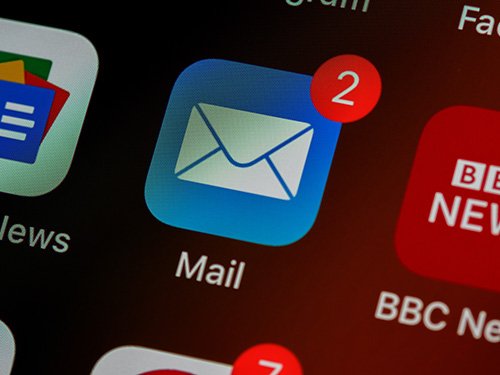Dear higher ed institutions, you probably think you’re great at communication. You send so many emails and messages! Or you’re very careful not to send too many messages. Either way, your students don’t agree.
Salesforce’s 2021 Connected Student Report found that 45% of students say there is a trust gap between leadership and students. Nearly 60% of students who feel that way attribute the gap to a lack of consistent communication.
The same study also found that nearly 90% of students would like as many or more alerts, emails, personalized messages and reminders.
Students are used to living in a highly connected world filled with near-constant communication. From text messages to comments to chats, students thrive on digital communication. Institutions need to find a way to connect with their students, and that might look different than it did in the past.
Don’t Rely on Email
While many institutions are experimenting with different communication channels, email remains a major touchpoint. It shouldn’t be.
A 2020 report from MyEmma found that the email open rate for higher ed is less than 35%. The click through rate (how often students click on a link in an email) is less than 7%. Students simply don’t check their email consistently these days.
Instead of relying on a communication method that’s clearly not working, expand communication to channels that are more in-line with the way today’s students engage:
- Text messages
- Push notifications
- Direct messaging/chat
You might spend all day everyday with your inbox open, but for younger generations, email is as easy to ignore as snail mail. While realistically you won’t stop sending emails altogether, make it easier for students to see those emails in a platform they’re already engaging with (like their student portal). Making communications visible without requiring students to open a separate app or log into their inbox will increase the chances of your message getting through.
Communication = Transparency
Often, when today’s students say they want communication, what they really mean is they want transparency. Young adults are highly media literate and can spot a disingenuous message from a mile away. Simply saying something in the spirit of communication is not enough. You have to say something of substance.
To combat the trust gap, be open and honest in communications. Send helpful, personalized messages, reminders, alerts and other communications (not blanket messages that may or may not apply to a particular student). Messaging addressing a particular issue should be candid, clearly state the issue and outline how the institution plans on responding. Students expect more than “thoughts and prayers” messaging, they want action.
Transparent communication needs to be a two-way road. Less than 50% of students feel their college administration makes it clear that they want to know about the student experience, according to an Inside Higher Ed Student Voice survey. The same survey found that half of students are slightly or not at all confident that they would know which department to go to if they had to raise an issue. Less than 25% have spoken up about a campus issue that was important to them, and many of those who do speak up don’t anticipate officials acting on the concern.
Ask students what type of communication is important to them and make it clear how they can communicate with the institution. If students don’t know how to communicate with the institution or feel their messages won’t be heard, your communications to them are going to feel less meaningful. Communication needs to be a conversation, not a broadcast.
Make Communications Personal
Students expect personalized, tailored communication. It’s how the consumer and social media worlds work and it’s how higher education institutions need to think about communications. Broad messages are just noise that will be ignored.
According to the Salesforce study, about 50% of students say they would like to receive more personalized communications from their institutions. That’s because students find this type of communication helpful. More than 90% of students who receive early academic alerts and nudges find them useful, according to a recent Educause Student Technology report.
Higher education is an investment, and students are leaning on institutions to help make that investment worthwhile. Sending highly personalized communications that help students on their college journey is an impactful way schools can support students. You’re already sending student communications, so make them count by communicating in a way that students expect. This may require rethinking your communication strategy, but the result (messages that get seen) is worth it.
Need help crafting a communication strategy? See how Redeemer University took a centralized, thoughtful approach to campus communication. Read the Redeemer case study.

